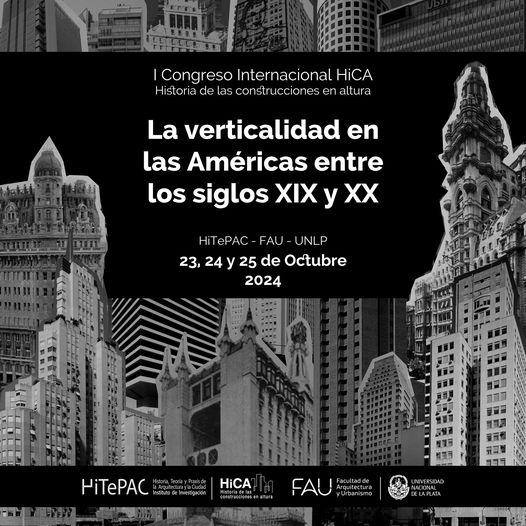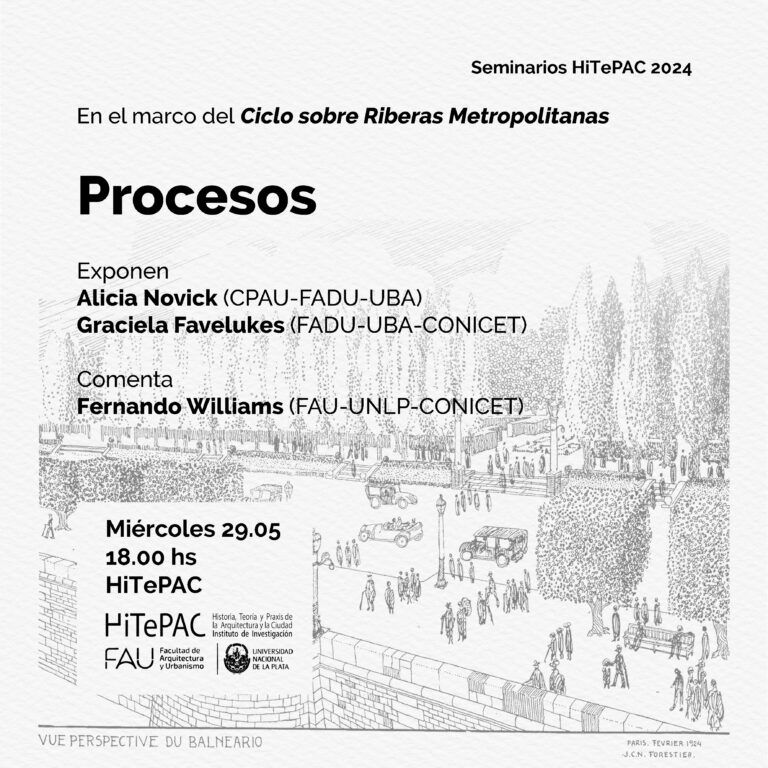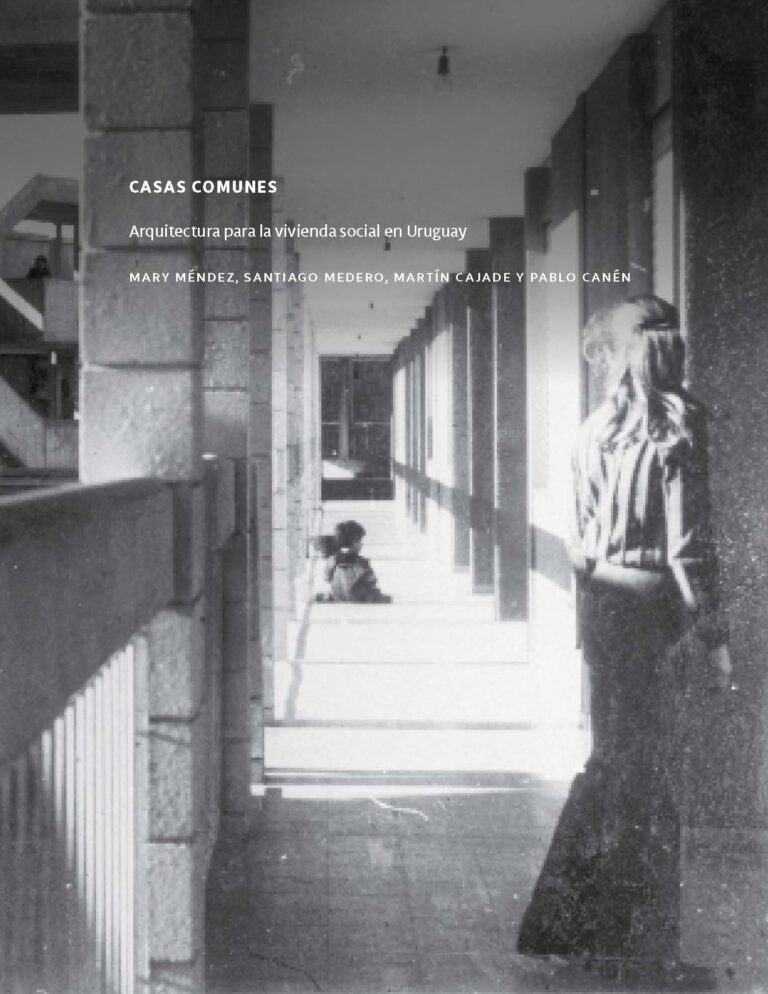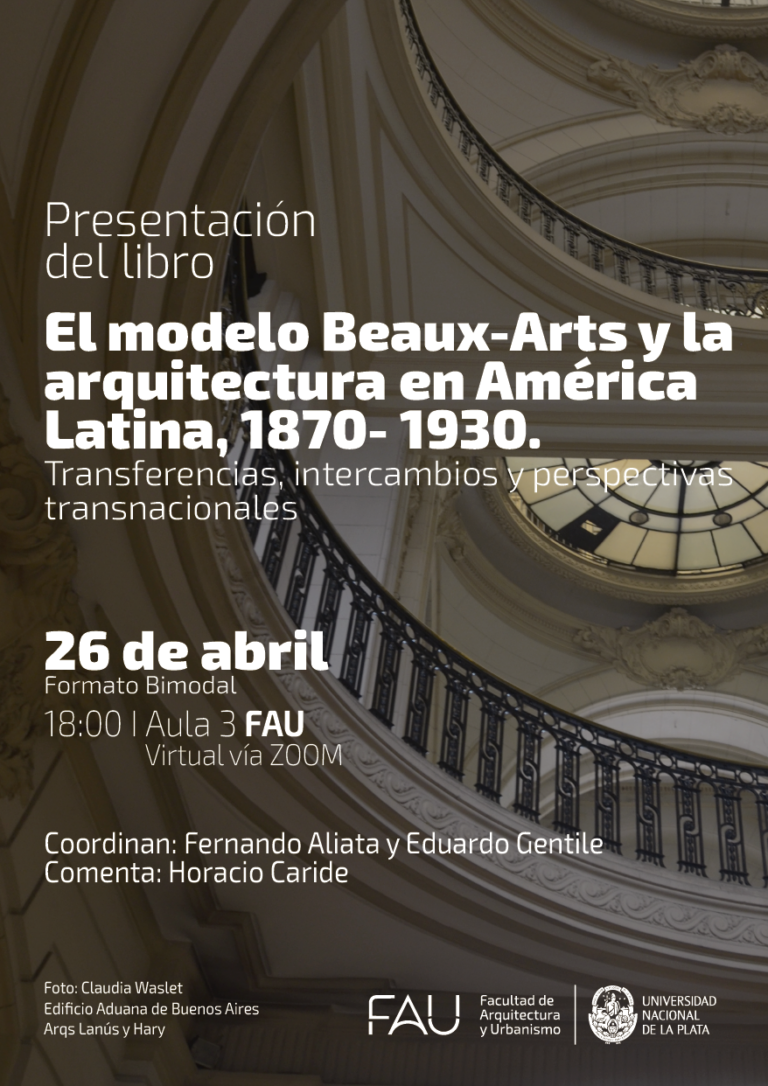I CONGRESO INTERNACIONAL HiCA : La verticalidad en las Américas entre los siglos XIX-XX — 23, 24 y 25 de octubre de 2024 , FAU-UNLP.
El Comité Organizador del I Congreso Internacional HiCA – Historia de las construcciones en altura ha decidido establecer una prórroga para el envío de los resúmenes.
☛El nuevo plazo es el 30 de octubre de 2023
-Se recuerda que los resúmenes se podrán presentar en español, francés, inglés o portugués, con una extensión máxima de 500 palabras. Deberá indicarse en nombre/s del/de los/las autor/es/as, su pertenencia institucional y correo electrónico. Se recibirá únicamente una propuesta por autor/a o por autores/as en caso de propuestas colectivas. Se permiten hasta 3 (tres) autores/as por trabajo.
-El archivo de los resúmenes deberá tener la siguiente forma: apellido de/los autor/res, seguido del eje temático en el que se inscribe (ejemplo: Gonzalez – eje 3).
Los ejes temáticos son:
1) Nuevas perspectivas historiográficas
2) Imágenes de la construcción en altura: utopías, representaciones
3) Programas y tipologías de la metrópoli moderna
4) Tecnologías y saberes relacionados a las construcciones en altura
5) Instituciones, normativa.
The organizing Committee of the I HiCA International Conference- Historia de las construcciones en altura- has decided to extend the call for papers deadline.
☛The new deadline is October 30th 2023
-Abstract length: up to 500 words. A maximum of three authors will be allowed for each proposal. Papers can be submitted in Spanish, French, English or Portuguese. Proposals must include the following information: thematic area, paper title, name/s of author/s, institution/s of the author/s, email of all authors.
-The abstract file must have the following form: surname of the author(s), followed by the selected thematic area (example: Gonzalez – area 3).
The thematic areas are:
1) New historiographical perspectives.
2) Images of high-rise architecture: utopias and representations
3) Projects and typologies of the modern city
4) high-rise architecture technologies and knowledge
5) Institutions and regulations





